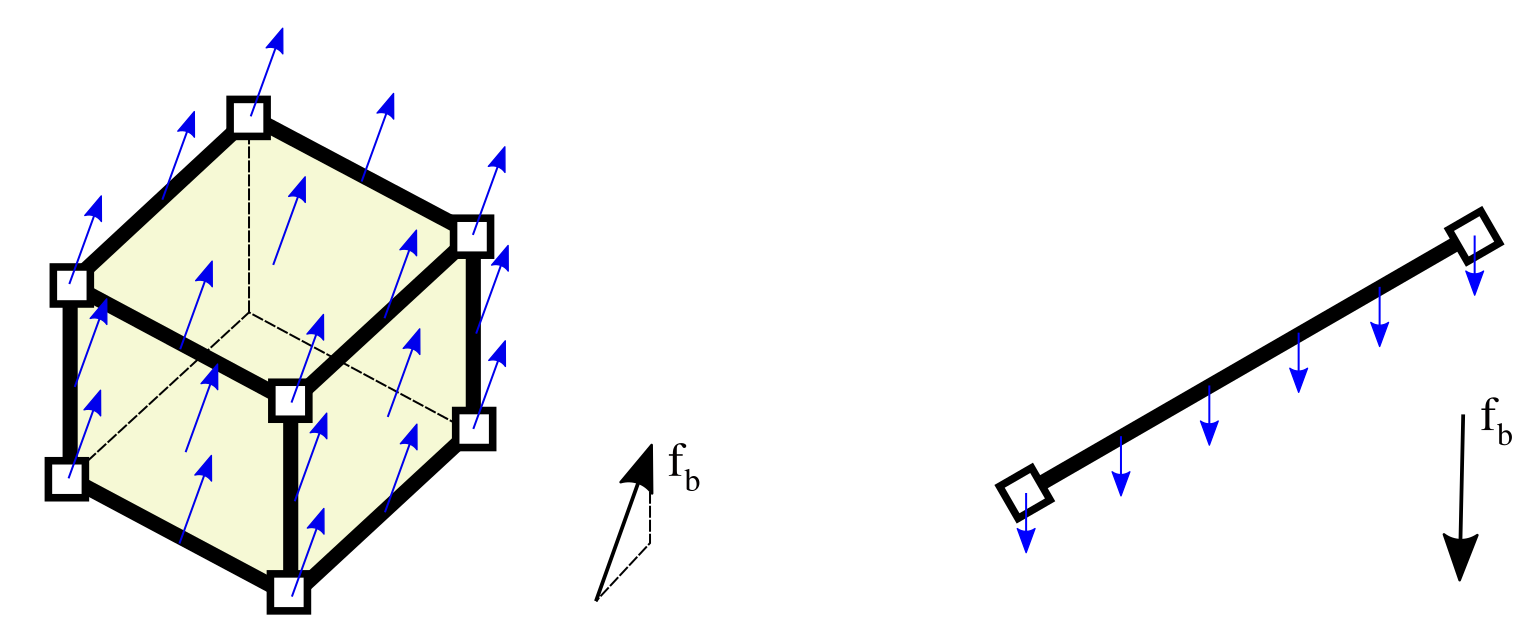Represent a body/volume force that is applied on an Element object. This force is represented by a constant magnitude and direction that is applied on the element. The Load object created in this manner is transformed in the element level using its volume into node forces and then assemble directly to the global force vector. The static body load direction needs to coincide with the global coordinate system.

REFERENCE:
The python Pre-Analysis in the 01-Pre_Process/Method/Attach.py file provides with an interface to create a STATIC BODY LOAD. For example, to create a Static body-load using json format, use:
addLoad(tag, name, attributes):
Example
A STATIC BODY LOAD can be defined using the python interface as follows:
SVL.addLoad(tag=1, name='ElementLoad', attributes={'fun': 1, 'type': 'Body', 'list': [1,2,3,4,5]})
The information required to define the magnitude and direction of this Load is provided in the attributes['fun'] identifier. Thus, to create a CONSTANT FUNCTION using the json format, use:
addFunction(tag, name, attributes):
Example
A CONSTANT FUNCTION can be defined using the python interface as follows:
SVL.addFunction(tag=1, name='Constant', attributes={'mag': 10.00, 'dir': [0.0, 0.0, -1.0]})
Application
Please refer to the I05-ST_Lin_3DBodyLoad_Elastic_Hexa8.py file located at 03-Validations/01-Debugging/ to see an example on how a STATIC BODY LOAD and its CONSTANT FUNCTION are defined.
On the contrary, the 01-Pre_Process/Method/Remove.py file provides with an interface to depopulate the Entities dictionary. For example, to remove an already define Load, use:
Now, to remove a already defined function, use:
The C++ Run-Analysis in the 02-Run_Process/05-Loads/Load.cpp file provides the class implementation. A STATIC BODY LOAD is defined inside the "Loads" json field indicating its "Tag" as follows,
{
"Loads": {
"Tag": {
"name" : "ELEMENTLOAD",
"attributes": {
"name": "CONSTANT",
"type": "BODY",
"mag": double,
"dir": [ ],
"list": [ ]
}
}
}
}
| Variable | Description |
|---|---|
Tag | Unique load object identifier. |
mag | Magnitude/intensity of the applied force, traction or body load. |
dir | Vector containing the direction of the force. |
list | List of Element identifiers that share this load. |
A 2D gravitational STATIC BODY LOAD applied on elements 1,3,5, and 7:
{ "Loads": { "1": { "name" : "ELEMENTLOAD", "attributes": { "name": "CONSTANT", "type": "BODY", "mag": 9.80, "dir": [0.000, -1.000], "list": [1,3,5,7] } } } }